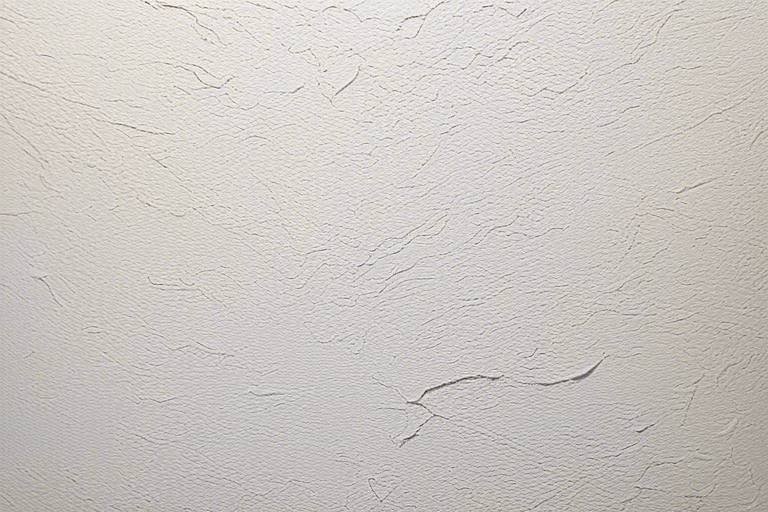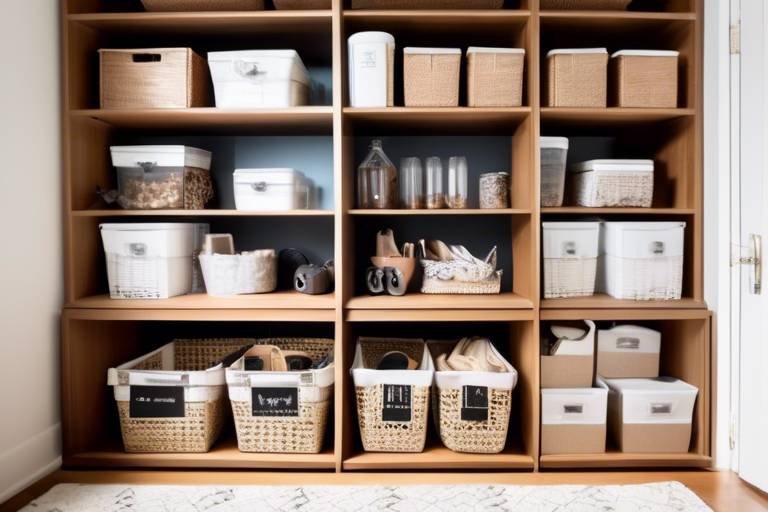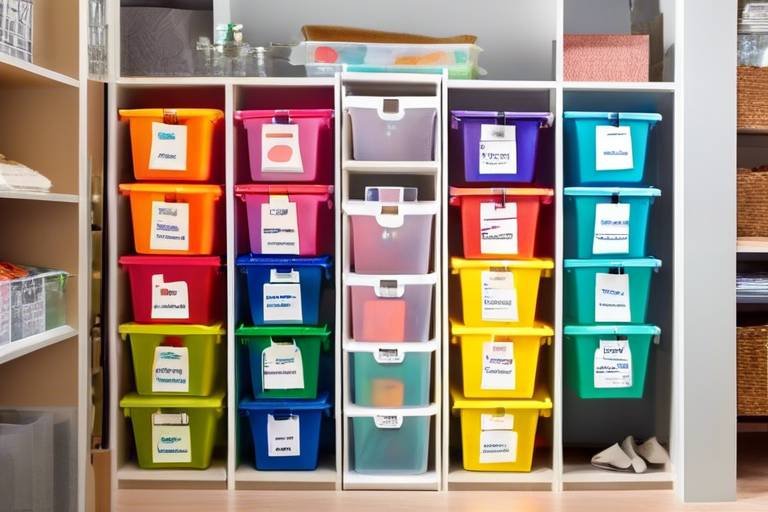How to Achieve a Smooth Paint Finish on Rough Surfaces
When it comes to achieving a smooth paint finish on rough surfaces, there are several key techniques and tips that can make a significant difference in the overall outcome of your project. Whether you are working on a DIY home improvement task or a professional painting job, the process of painting rough surfaces requires careful preparation and execution to ensure a flawless result that enhances the aesthetic appeal of the surface.
One of the most crucial steps in achieving a smooth paint finish on rough surfaces is proper surface preparation. This involves thorough cleaning to remove any dirt, dust, or debris that could affect the adhesion of the paint. Additionally, sanding the surface to smooth out rough areas and applying a primer to create a uniform base for the paint can greatly improve the final result.
Choosing the right type of paint is also essential in achieving a smooth finish on rough surfaces. Selecting a high-quality paint that is specifically designed to cover imperfections and adhere well to uneven surfaces can make a significant difference in the final appearance of the painted surface. Consider the finish of the paint as well, as certain finishes can help to hide imperfections and create a more polished look.
Utilizing fillers and sealers can further help in achieving a smooth paint finish on rough surfaces. Fillers can be used to level out uneven areas and fill in gaps, while sealers can create a smooth and uniform surface for painting. These products can help to create a seamless base for the paint, resulting in a more professional-looking finish.
When it comes to applying the paint, using the right techniques is key to achieving a smooth and even finish on rough surfaces. Methods such as stippling, rolling, and brushing can help to distribute the paint evenly and cover rough areas effectively. Applying multiple thin coats of paint and allowing proper drying time between layers is essential to prevent drips and ensure a flawless finish.
After applying the paint, sanding between coats can help to smooth out imperfections and create a polished finish on rough surfaces. This step is crucial in achieving a professional-looking result and ensuring that the surface is smooth and even. Additionally, applying a clear protective coating such as varnish or sealant can help to safeguard the paint finish from damage and wear, ensuring long-lasting durability.
Finally, adding final touches and maintaining the smooth paint finish on rough surfaces is essential for preserving the overall appearance of the surface. Regular maintenance, such as cleaning and touch-ups, can help to keep the paint looking fresh and vibrant. By following these tips and techniques, you can achieve a flawless paint finish on rough surfaces that enhances the beauty and longevity of your project.

Surface Preparation
Surface preparation is a crucial step in achieving a smooth paint finish on rough surfaces. Before diving into the painting process, it is essential to ensure that the surface is properly cleaned, sanded, and primed. Cleaning the surface removes any dirt, grease, or debris that can affect the adhesion of the paint. Sanding helps to smooth out rough areas and create a uniform surface for painting. Priming is important as it provides a base for the paint to adhere to, ensuring better coverage and longevity of the finish.

Choosing the Right Paint
When it comes to achieving a smooth paint finish on rough surfaces, selecting the right paint is crucial. The type of paint you choose can significantly impact the final result, so it's essential to consider a few key factors before making your decision.
1. Paint Type: Different types of paint are designed for specific surfaces. For rough surfaces, consider using acrylic or latex paint, as they are flexible and can adhere well to uneven areas. These types of paint can also help cover imperfections effectively.
2. Finish: The finish of the paint also plays a vital role in achieving a smooth result. Opt for a satin or eggshell finish, as they are more forgiving on rough surfaces compared to high-gloss finishes. These finishes can help mask minor imperfections and provide a more uniform look.
3. Coverage: Look for paint that offers good coverage to minimize the number of coats needed to achieve the desired finish. Paints with high pigmentation can help hide flaws and create a more even surface.
4. Durability: Consider the durability of the paint, especially if the painted surface will be exposed to wear and tear. Choose a paint that is resistant to moisture, stains, and fading to ensure long-lasting results on rough surfaces.
By carefully considering these factors and choosing the right paint type and finish, you can enhance the overall aesthetic appeal of your project and achieve a flawless paint finish on rough surfaces.

Using Fillers and Sealers
When dealing with rough surfaces, using fillers and sealers is a crucial step in achieving a smooth paint finish. These products play a vital role in leveling out uneven areas, filling in gaps, and creating a uniform surface for painting. By properly applying fillers and sealers, you can ensure that the final paint job looks flawless and professional.
Fillers are particularly useful for addressing larger imperfections on rough surfaces. They can be applied to areas with cracks, holes, or deep gouges to create a smooth and even surface for paint application. Sealers, on the other hand, help to seal porous surfaces and provide a base for the paint to adhere to, ensuring better coverage and longevity of the finish.
Before applying fillers and sealers, it is essential to clean and prepare the surface properly. Any dirt, dust, or debris should be removed to ensure that the products adhere well and create a seamless finish. Additionally, sanding the surface lightly before applying fillers can help improve adhesion and smooth out rough areas.
When choosing fillers and sealers, opt for products that are specifically designed for the type of surface you are working on. Different materials may require different types of fillers and sealers, so make sure to select ones that are compatible with the surface material to achieve the best results.
After applying fillers and sealers, allow sufficient drying time as per the manufacturer's instructions before proceeding with the paint application. It is crucial to ensure that the surface is completely dry and smooth before moving on to the next steps in the painting process.

Applying Paint Techniques
When it comes to achieving a smooth paint finish on rough surfaces, the application technique plays a crucial role in determining the final result. requires precision and skill to ensure an even coat and professional finish. One popular method is stippling, which involves dabbing the paint onto the surface using a stippling brush or sponge. This technique helps to create texture and cover imperfections effectively.
Another common approach is rolling, where a paint roller is used to apply an even layer of paint. This method is ideal for covering larger areas quickly and efficiently. Additionally, brushing is a traditional technique that allows for detailed work and precise application, especially in tight or intricate spaces where rollers may not reach easily.
For more complex surfaces, a combination of these techniques may be necessary to achieve the desired smooth finish. Experimenting with different methods and tools can help you find the most suitable approach for your specific project. Remember, practice makes perfect, so don't be afraid to try out various techniques to see which works best for your rough surface painting needs.

Layering and Drying
Layering and drying are crucial steps in achieving a flawless paint finish on rough surfaces. When it comes to painting uneven or textured surfaces, applying multiple thin coats of paint is key to ensuring a smooth and even result. Each layer of paint adds depth and coverage, gradually building up the finish you desire.
By layering the paint, you can also address any imperfections or uneven areas more effectively. The multiple coats help to fill in gaps and level out rough spots, creating a more uniform surface for the final paint application. This technique allows you to gradually cover the rough surface without creating a thick, uneven layer of paint.
Proper drying time between each layer is essential to prevent drips, runs, or uneven surfaces. Rushing the drying process can lead to a messy finish and compromise the overall quality of your paint job. Patience is key when it comes to layering and drying, as allowing each coat to dry thoroughly will result in a smoother and more professional-looking paint finish.
When layering paint on rough surfaces, consider using techniques such as stippling, rolling, or brushing to ensure even coverage and a seamless finish. Each method has its advantages depending on the texture of the surface and the type of paint being used. Experimenting with different application techniques can help you achieve the desired result.
Remember, the goal of layering and drying is to gradually build up the paint finish while maintaining a smooth and consistent surface. Taking the time to apply multiple thin coats and allowing each layer to dry completely will ultimately lead to a flawless paint finish on even the roughest of surfaces.

Sanding and Smoothing
When it comes to achieving a smooth paint finish on rough surfaces, sanding and smoothing play a crucial role in the process. Before applying paint, it's essential to prepare the surface properly by sanding down any rough areas and smoothing out imperfections. This step not only helps create a uniform surface for painting but also ensures that the paint adheres well and results in a flawless finish.
One effective technique for sanding rough surfaces is to use sandpaper with a fine grit. This helps to gently remove any bumps or rough patches without damaging the surface underneath. Additionally, sanding between coats of paint can help to smooth out any uneven areas and create a polished finish.
Another method for achieving a smooth paint finish is to use a sanding block or sponge, which can conform to the shape of the surface and provide more even sanding pressure. This is particularly useful when dealing with curved or irregular surfaces that may be challenging to sand with traditional sandpaper.
Furthermore, it's important to pay attention to the direction of sanding to avoid creating visible scratches or marks on the surface. By sanding in a consistent motion, you can achieve a smooth and uniform finish that enhances the overall aesthetic appeal of your project.

Protective Coatings
When it comes to ensuring the longevity and durability of a paint finish on rough surfaces, the application of protective coatings plays a crucial role. These coatings act as a shield, safeguarding the painted surface from various forms of damage and wear over time. Whether it's protecting against moisture, UV rays, or general wear and tear, applying a clear protective coating such as varnish or sealants can significantly extend the life of the paint job.
One of the key benefits of using protective coatings is their ability to enhance the overall appearance of the painted surface. Not only do they provide a glossy or matte finish, depending on the type of coating used, but they also help to seal in the color and texture of the paint, giving it a more polished and professional look. Additionally, these coatings can make the surface easier to clean and maintain, ensuring that your paint finish remains pristine for years to come.
When applying protective coatings, it's essential to follow the manufacturer's instructions carefully. Proper application techniques, such as using the right tools and ensuring even coverage, can make a significant difference in the effectiveness of the coating. Additionally, allowing sufficient drying time between coats and ensuring that the surface is clean and dry before application are crucial steps in achieving the best results.
Another aspect to consider when using protective coatings is the type of finish you desire. While some coatings provide a high-gloss shine that adds depth and richness to the paint job, others offer a more subtle matte finish that can complement certain aesthetics. Understanding the different types of protective coatings available and their effects on the final look of the painted surface can help you make an informed decision based on your preferences.
In addition to enhancing the visual appeal and durability of the paint finish, protective coatings also offer added protection against external elements. Whether it's protecting outdoor surfaces from harsh weather conditions or indoor surfaces from daily wear, these coatings act as a barrier that shields the paint underneath, prolonging its lifespan and maintaining its quality over time.
Overall, the application of protective coatings is a crucial step in achieving a smooth and long-lasting paint finish on rough surfaces. By selecting the right type of coating, applying it correctly, and maintaining it regularly, you can ensure that your paint job not only looks great but also stands the test of time.

Final Touches and Maintenance
Final touches and maintenance play a crucial role in ensuring the longevity and quality of the paint finish on rough surfaces. Once the painting process is complete, it's essential to add those final touches that elevate the overall look and feel of the project. This includes inspecting the painted surface for any missed spots or imperfections and making necessary touch-ups.
Additionally, maintenance is key to preserving the smooth paint finish over time. Regular cleaning with a gentle cleanser and soft cloth can help remove dust and dirt that may accumulate on the surface. Avoid using harsh chemicals or abrasive materials that can damage the paint.
Furthermore, it's important to keep an eye out for any signs of wear and tear on the painted surface. Addressing any chips, scratches, or peeling paint promptly can prevent further damage and maintain the aesthetic appeal of the project.
Applying a fresh coat of paint or protective coating periodically can also help extend the life of the paint finish on rough surfaces. This not only enhances the appearance but also provides added protection against environmental factors that can degrade the paint over time.
Lastly, consider implementing a maintenance schedule to ensure regular upkeep of the painted surface. By staying proactive and addressing any issues promptly, you can enjoy a smooth and flawless paint finish on rough surfaces for years to come.
Frequently Asked Questions
- How can I achieve a smooth paint finish on rough surfaces?
To achieve a smooth paint finish on rough surfaces, it is essential to properly prepare the surface by cleaning, sanding, and priming. Choosing the right type of paint that can cover imperfections and using fillers to level out rough areas are also crucial steps.
- What paint techniques are recommended for rough surfaces?
For rough surfaces, techniques such as stippling, rolling, and brushing are commonly used to achieve a smooth and even paint application. It is important to apply multiple thin coats of paint and allow proper drying time between layers to prevent drips and ensure a polished finish.
- How do I maintain the smooth paint finish on rough surfaces?
Maintaining a smooth paint finish on rough surfaces involves adding final touches and applying clear protective coatings like varnish or sealants to protect the paint from damage and wear. Regular maintenance and touch-ups can help ensure the durability of the paint finish over time.



















